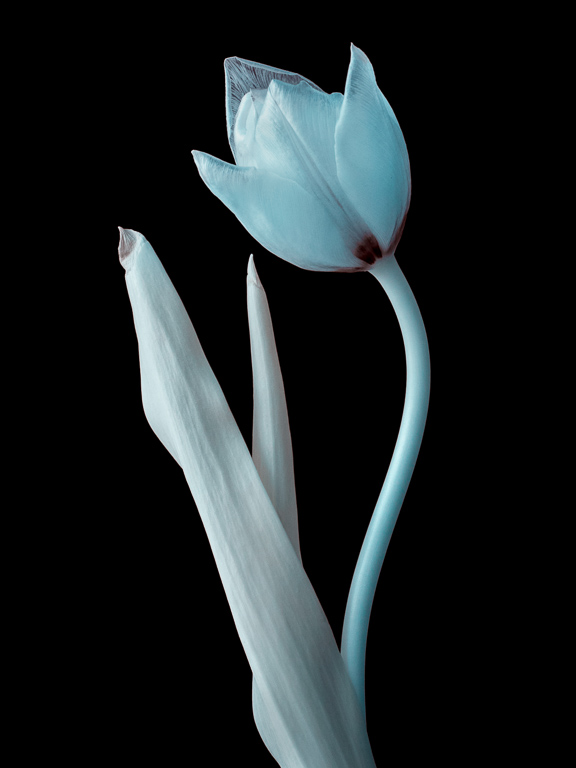Shot of the Week 2019/06 – Faded Tulip
During what was a quiet period photography wise, I was looking for a subject in the house for the week’s photo. I had a few ideas before finding this tulip which had, admittedly, seen better days. As well as its faded glory, the stem had become twisted with age into an interesting shape. While I could have done a straight shot, I wanted something a bit different. That was when the idea of shooting it in infrared came to me. I have done something similar before but realised I had never tried using a black background. Intrigued, I set up the shot to see how it would turn out.

Foliage naturally reflects a lot of infrared light which means that it turns pale when photographed with an infrared camera. Combined with the black backdrop, it produced the high contrast look you see. The tulip being less than pristine does not matter so much as the infrared rendering mainly masks the imperfections. Not that it would necessarily be a problem as we photographers sometimes like a bit of decay. It has its own aesthetic appeal.
I processed the Raw file in Lightroom. In theory, colour does not exist in infrared as it sits beyond the visible portion of the spectrum. In practice, some colour will be apparent. The camera’s digital sensor is still registering red, green and blue tones, although most of the information is in the red channel. With the default rendering, the black velvet cloth I used initially appeared to be dark blue. A quick adjustment of the Shadow slider returned it to black without affecting the other tones. Conversion to monochrome was in Silver Efex Pro 2.
False colour effect
The presence of colour in the capture allows the option to have false colour effects. I experimented in Photoshop to produce this version with some delicate blue hues. The processing was straightforward. First, I swapped the red and blue channels in the Channel Mixer. In the red channel, I set red to 0 (zero) and blue to +100. In the blue channel, blue became 0 and red 100. I then boosted the resulting blue tones using Vibrance.
